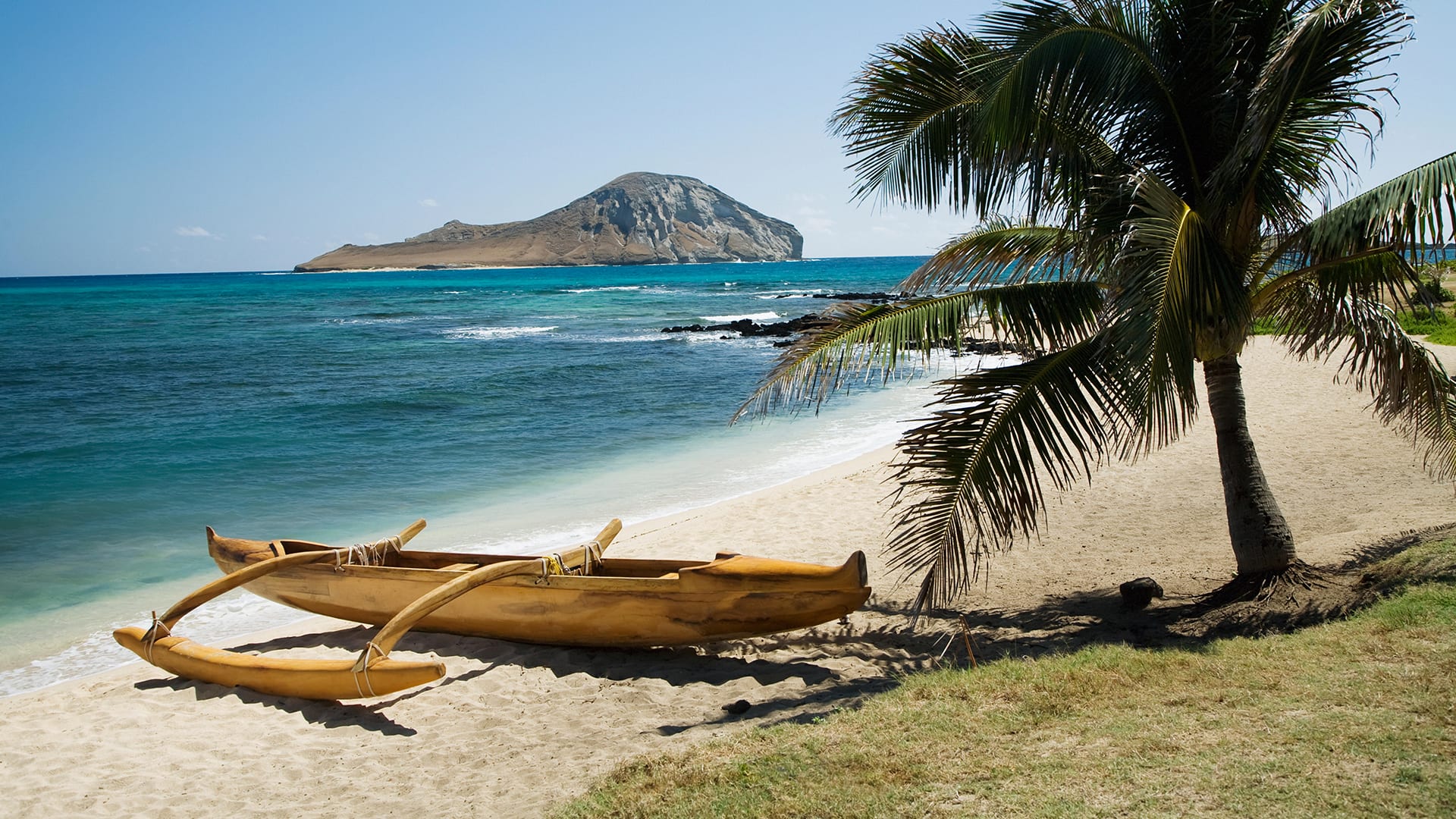Scroll for prep

Please wait…
This video is having trouble loading. You may have lost your Internet connection.
Step 1: Click to Reload this page
Step 2: Click to
Try our other video player
Step 3: contact support if trouble persists.
Or,
dismiss this message.
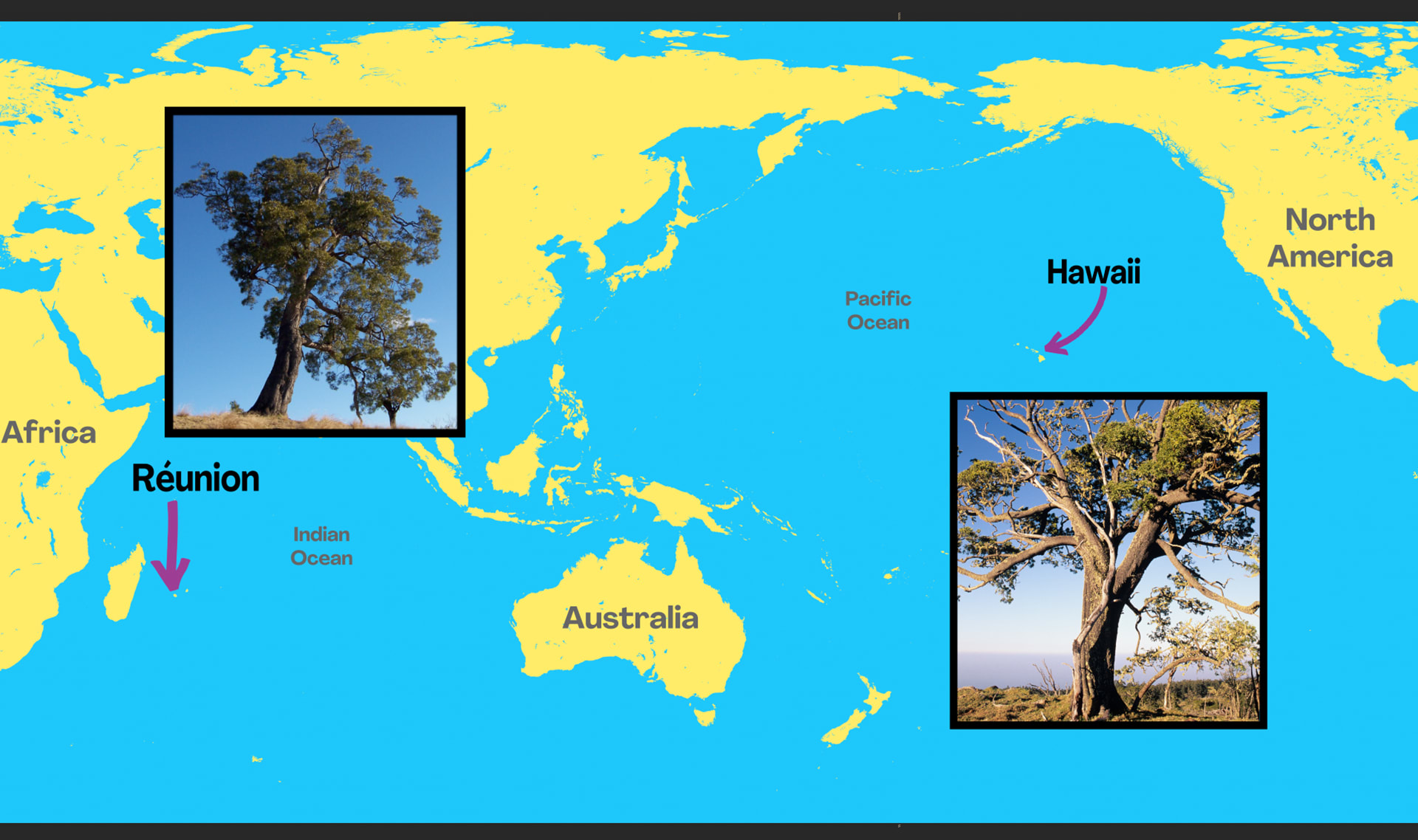
DISCUSS:
How could the same kind of tree grow in only two places, thousands of
miles apart?
How could the same kind of tree grow in only two places, thousands of
miles apart?

Please wait…
This video is having trouble loading. You may have lost your Internet connection.
Step 1: Click to Reload this page
Step 2: Click to
Try our other video player
Step 3: contact support if trouble persists.
Or,
dismiss this message.
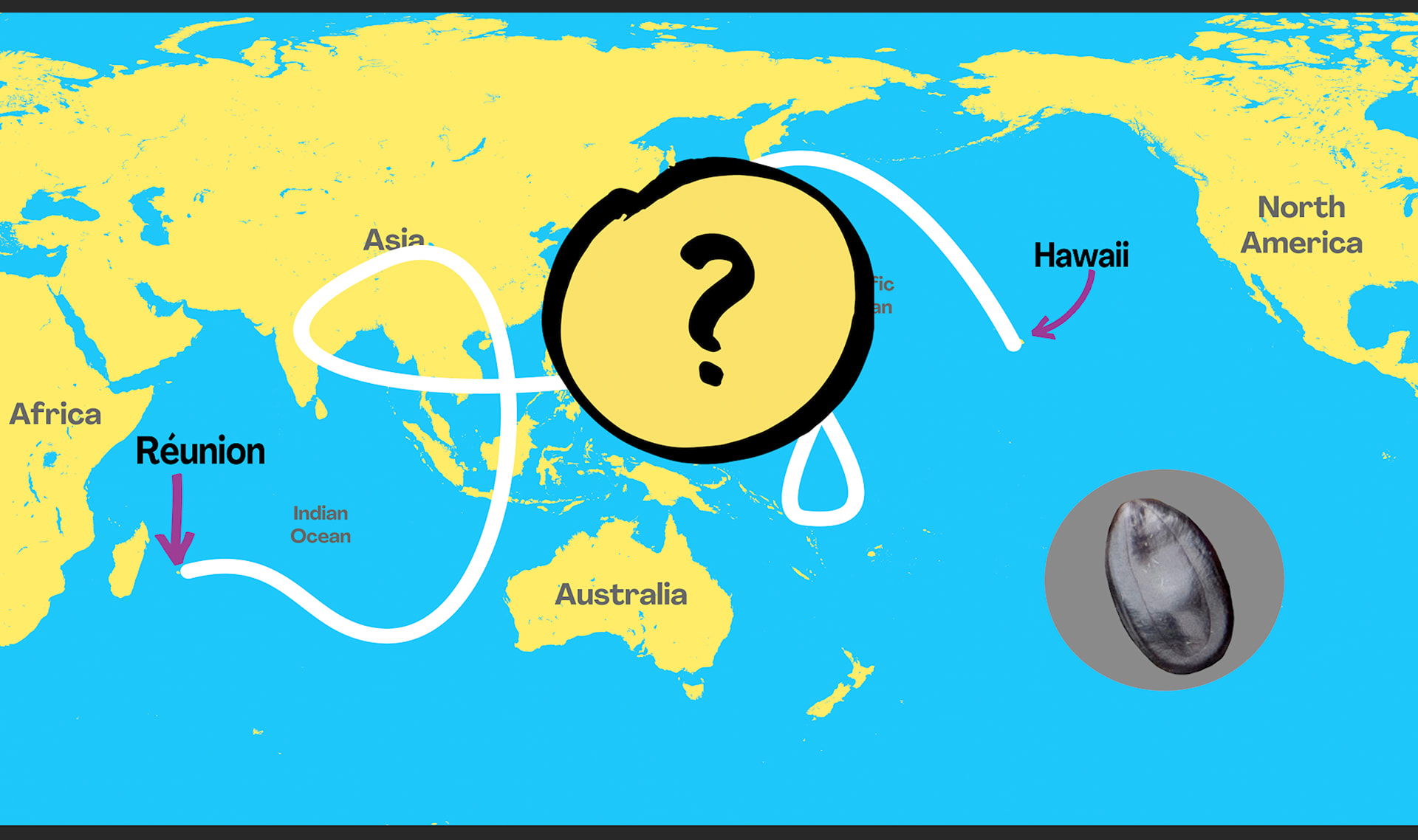
DISCUSS:
How could a koa seed travel all the way from Hawaii to Réunion?
How could a koa seed travel all the way from Hawaii to Réunion?

Please wait…
This video is having trouble loading. You may have lost your Internet connection.
Step 1: Click to Reload this page
Step 2: Click to
Try our other video player
Step 3: contact support if trouble persists.
Or,
dismiss this message.
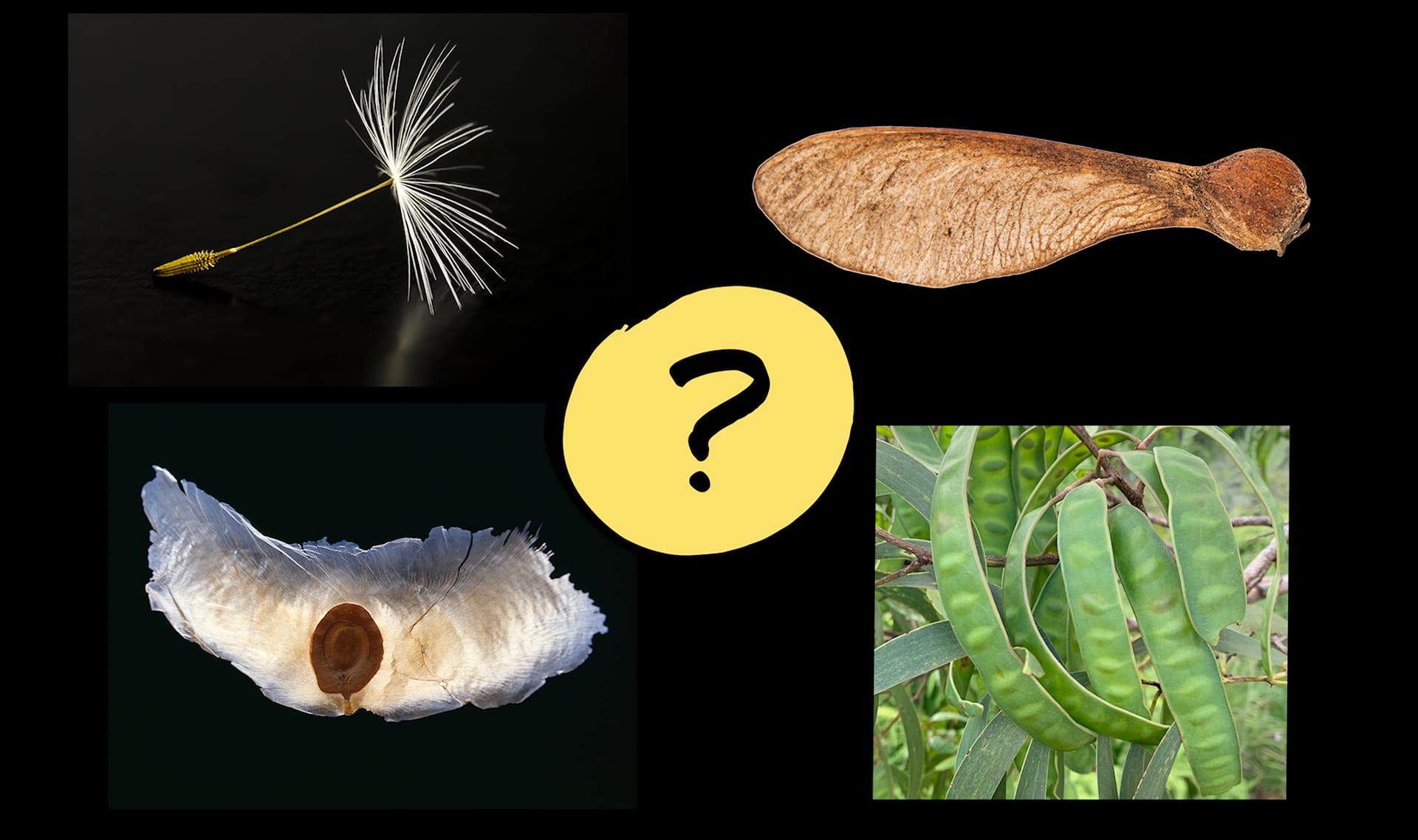
DISCUSS:
How will the structure around these seeds change how they travel
through the air?
How will the structure around these seeds change how they travel
through the air?

Please wait…
This video is having trouble loading. You may have lost your Internet connection.
Step 1: Click to Reload this page
Step 2: Click to
Try our other video player
Step 3: contact support if trouble persists.
Or,
dismiss this message.

Please wait…
This video is having trouble loading. You may have lost your Internet connection.
Step 1: Click to Reload this page
Step 2: Click to
Try our other video player
Step 3: contact support if trouble persists.
Or,
dismiss this message.
Step
01/18
01/18
You’ll work with a partner.

Please wait…
This video is having trouble loading. You may have lost your Internet connection.
Step 1: Click to Reload this page
Step 2: Click to
Try our other video player
Step 3: contact support if trouble persists.
Or,
dismiss this message.
Step
02/18
02/18
Get your supplies.

Please wait…
This video is having trouble loading. You may have lost your Internet connection.
Step 1: Click to Reload this page
Step 2: Click to
Try our other video player
Step 3: contact support if trouble persists.
Or,
dismiss this message.
Step
03/18
03/18
Write your name on the back of your maple model. Then fold dot A to
dot B. When you’re done, the gray triangle should be covered.
dot B. When you’re done, the gray triangle should be covered.

Please wait…
This video is having trouble loading. You may have lost your Internet connection.
Step 1: Click to Reload this page
Step 2: Click to
Try our other video player
Step 3: contact support if trouble persists.
Or,
dismiss this message.
Step
04/18
04/18
Fold the triangle up so that it covers the picture of a seed.
Slide your paper clip on the bottom of your seed.
Slide your paper clip on the bottom of your seed.

Please wait…
This video is having trouble loading. You may have lost your Internet connection.
Step 1: Click to Reload this page
Step 2: Click to
Try our other video player
Step 3: contact support if trouble persists.
Or,
dismiss this message.
Step
05/18
05/18
Cut along the dotted line. Stop at the stop sign. When you’re done,
this part of your maple model should have two flaps.
this part of your maple model should have two flaps.

Please wait…
This video is having trouble loading. You may have lost your Internet connection.
Step 1: Click to Reload this page
Step 2: Click to
Try our other video player
Step 3: contact support if trouble persists.
Or,
dismiss this message.
Step
06/18
06/18
Fold flap 1 on the line toward you. Fold flap 2 on the line away from
you. Push your folded flaps up with your fingers so they stick out
sideways.
you. Push your folded flaps up with your fingers so they stick out
sideways.

Please wait…
This video is having trouble loading. You may have lost your Internet connection.
Step 1: Click to Reload this page
Step 2: Click to
Try our other video player
Step 3: contact support if trouble persists.
Or,
dismiss this message.
Step
07/18
07/18
When your teacher tells you, stand up next to your desk. Pretend to
be a tree. Root your feet to the ground, stand up tall, and stretch
your arms up.
be a tree. Root your feet to the ground, stand up tall, and stretch
your arms up.

Please wait…
This video is having trouble loading. You may have lost your Internet connection.
Step 1: Click to Reload this page
Step 2: Click to
Try our other video player
Step 3: contact support if trouble persists.
Or,
dismiss this message.
Step
08/18
08/18
Hold your maple model from the side with two fingers. Hold it high
above your head. Drop your model and observe how it falls. Repeat.
You have 3 minutes to test.
above your head. Drop your model and observe how it falls. Repeat.
You have 3 minutes to test.

Please wait…
This video is having trouble loading. You may have lost your Internet connection.
Step 1: Click to Reload this page
Step 2: Click to
Try our other video player
Step 3: contact support if trouble persists.
Or,
dismiss this message.
Step
09/18
09/18
Discuss:

Please wait…
This video is having trouble loading. You may have lost your Internet connection.
Step 1: Click to Reload this page
Step 2: Click to
Try our other video player
Step 3: contact support if trouble persists.
Or,
dismiss this message.
Step
10/18
10/18
Write your name on the back of your rain tree model. Cut along the 2
dotted black lines. Stop at the stop sign. When you’re done, you’ll
have two slits.
dotted black lines. Stop at the stop sign. When you’re done, you’ll
have two slits.

Please wait…
This video is having trouble loading. You may have lost your Internet connection.
Step 1: Click to Reload this page
Step 2: Click to
Try our other video player
Step 3: contact support if trouble persists.
Or,
dismiss this message.
Step
11/18
11/18
Hold the two ends of your printout and make a “U.”
Slide the slit at one end into the slit at the other.
Slide the slit at one end into the slit at the other.

Please wait…
This video is having trouble loading. You may have lost your Internet connection.
Step 1: Click to Reload this page
Step 2: Click to
Try our other video player
Step 3: contact support if trouble persists.
Or,
dismiss this message.
Step
12/18
12/18
Pretend to be a tree! Hold your rain tree model in the middle with the
ends pointing sideways. Hold it above your head, drop it, and observe
how it falls.
ends pointing sideways. Hold it above your head, drop it, and observe
how it falls.

Please wait…
This video is having trouble loading. You may have lost your Internet connection.
Step 1: Click to Reload this page
Step 2: Click to
Try our other video player
Step 3: contact support if trouble persists.
Or,
dismiss this message.
Step
13/18
13/18
Work with your partner to explore how both of your models fall.
Compare what is the same and what is different.
You have 3 minutes to test.
Compare what is the same and what is different.
You have 3 minutes to test.

Please wait…
This video is having trouble loading. You may have lost your Internet connection.
Step 1: Click to Reload this page
Step 2: Click to
Try our other video player
Step 3: contact support if trouble persists.
Or,
dismiss this message.
Step
14/18
14/18
Discuss:

Please wait…
This video is having trouble loading. You may have lost your Internet connection.
Step 1: Click to Reload this page
Step 2: Click to
Try our other video player
Step 3: contact support if trouble persists.
Or,
dismiss this message.

Please wait…
This video is having trouble loading. You may have lost your Internet connection.
Step 1: Click to Reload this page
Step 2: Click to
Try our other video player
Step 3: contact support if trouble persists.
Or,
dismiss this message.
Step
15/18
15/18
Write your name on the back of your koa model.
Fold it in half along the black line.
Run your fingernail along the fold to crease it.
Fold it in half along the black line.
Run your fingernail along the fold to crease it.

Please wait…
This video is having trouble loading. You may have lost your Internet connection.
Step 1: Click to Reload this page
Step 2: Click to
Try our other video player
Step 3: contact support if trouble persists.
Or,
dismiss this message.
Step
16/18
16/18
Hold your koa model with two fingers at one end. Hold your model
above your head, drop it, and observe how it falls. Repeat.
You have 3 minutes to test.
above your head, drop it, and observe how it falls. Repeat.
You have 3 minutes to test.

Please wait…
This video is having trouble loading. You may have lost your Internet connection.
Step 1: Click to Reload this page
Step 2: Click to
Try our other video player
Step 3: contact support if trouble persists.
Or,
dismiss this message.
Step
17/18
17/18
Discuss:

Please wait…
This video is having trouble loading. You may have lost your Internet connection.
Step 1: Click to Reload this page
Step 2: Click to
Try our other video player
Step 3: contact support if trouble persists.
Or,
dismiss this message.
Step
18/18
18/18
Discuss:

Please wait…
This video is having trouble loading. You may have lost your Internet connection.
Step 1: Click to Reload this page
Step 2: Click to
Try our other video player
Step 3: contact support if trouble persists.
Or,
dismiss this message.
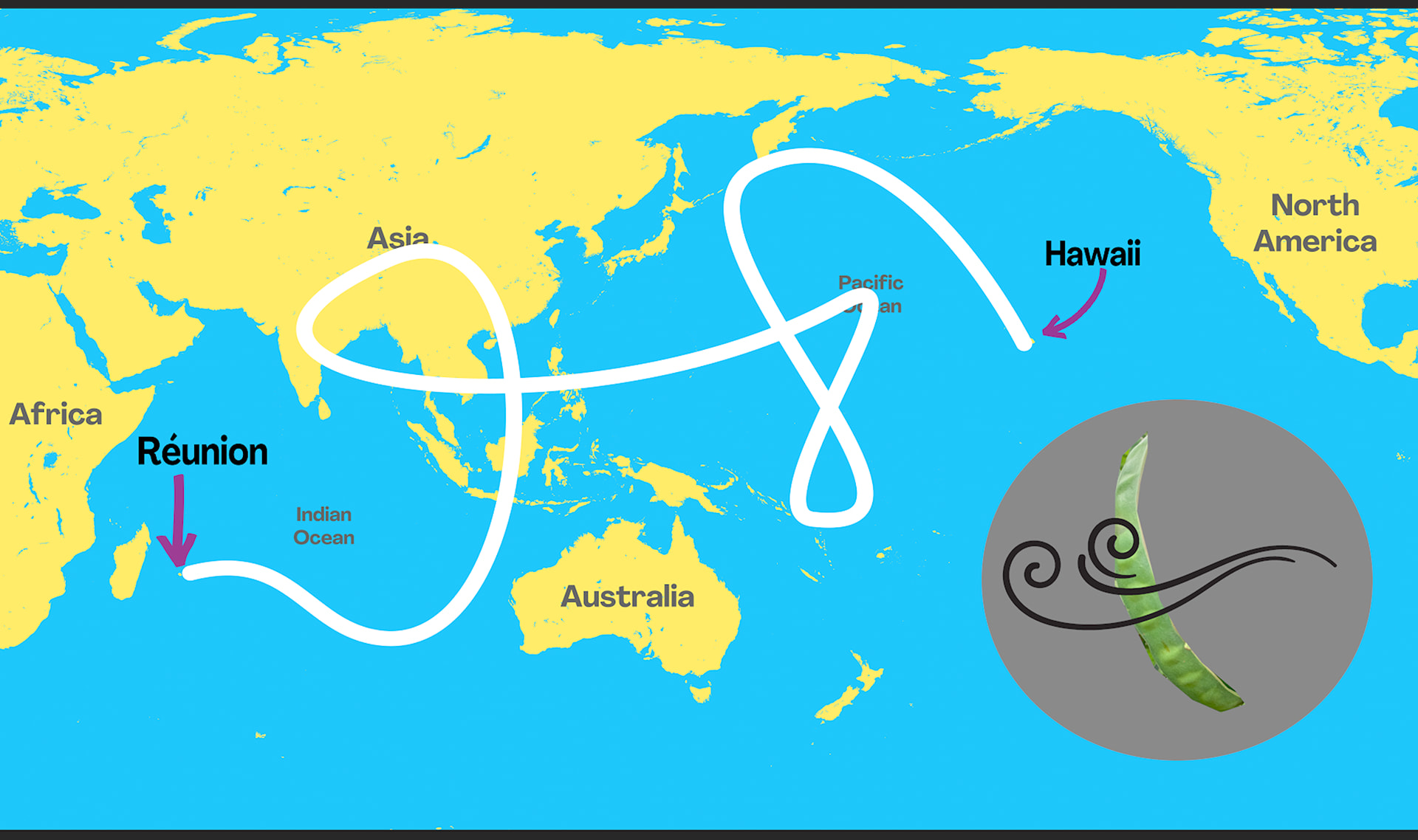
DISCUSS:
Do you think the wind could carry a koa seed halfway across the world?
Why or why not?
Do you think the wind could carry a koa seed halfway across the world?
Why or why not?

Please wait…
This video is having trouble loading. You may have lost your Internet connection.
Step 1: Click to Reload this page
Step 2: Click to
Try our other video player
Step 3: contact support if trouble persists.
Or,
dismiss this message.
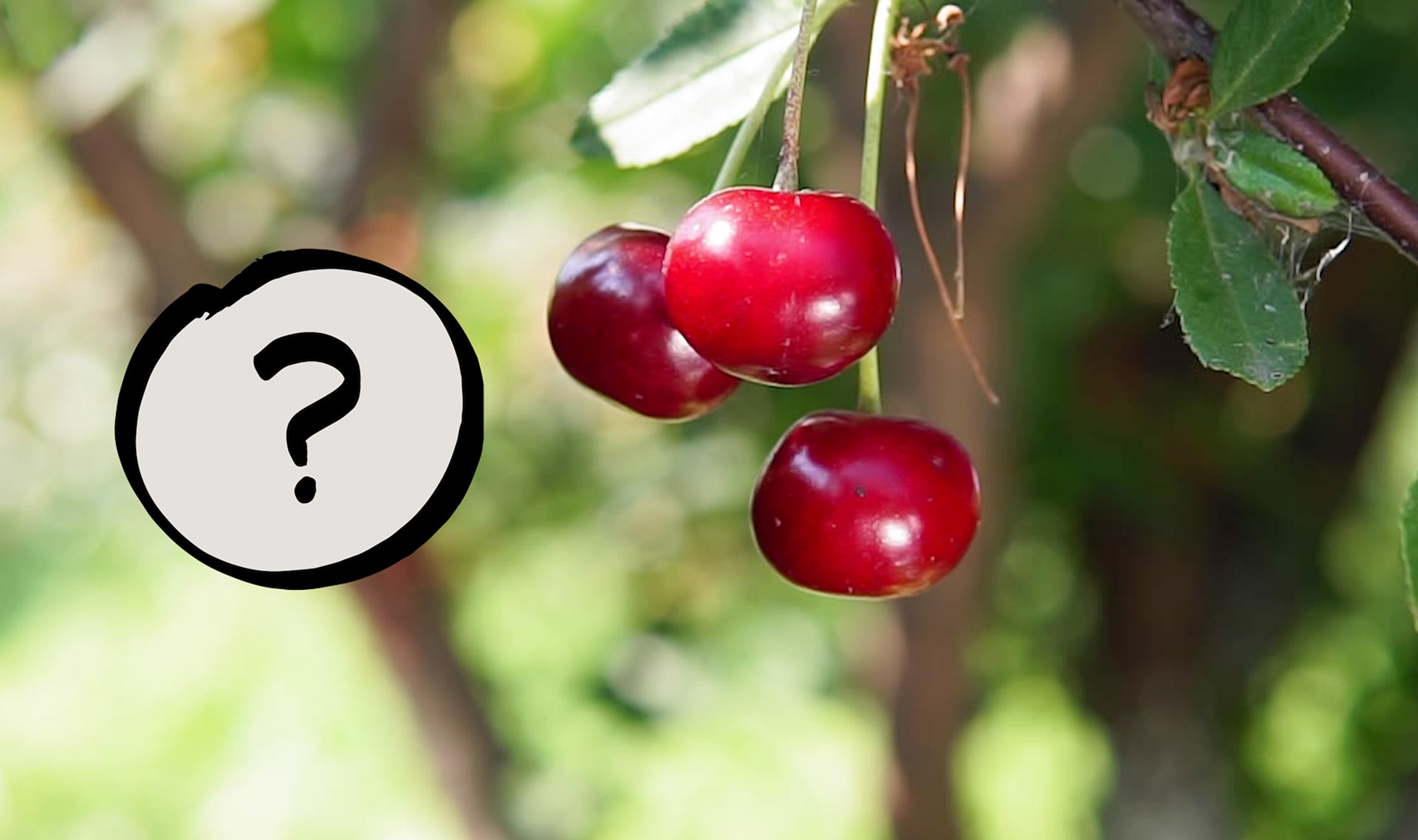
DISCUSS:
What could help a cherry seed move from one place to another?
What could help a cherry seed move from one place to another?

Please wait…
This video is having trouble loading. You may have lost your Internet connection.
Step 1: Click to Reload this page
Step 2: Click to
Try our other video player
Step 3: contact support if trouble persists.
Or,
dismiss this message.
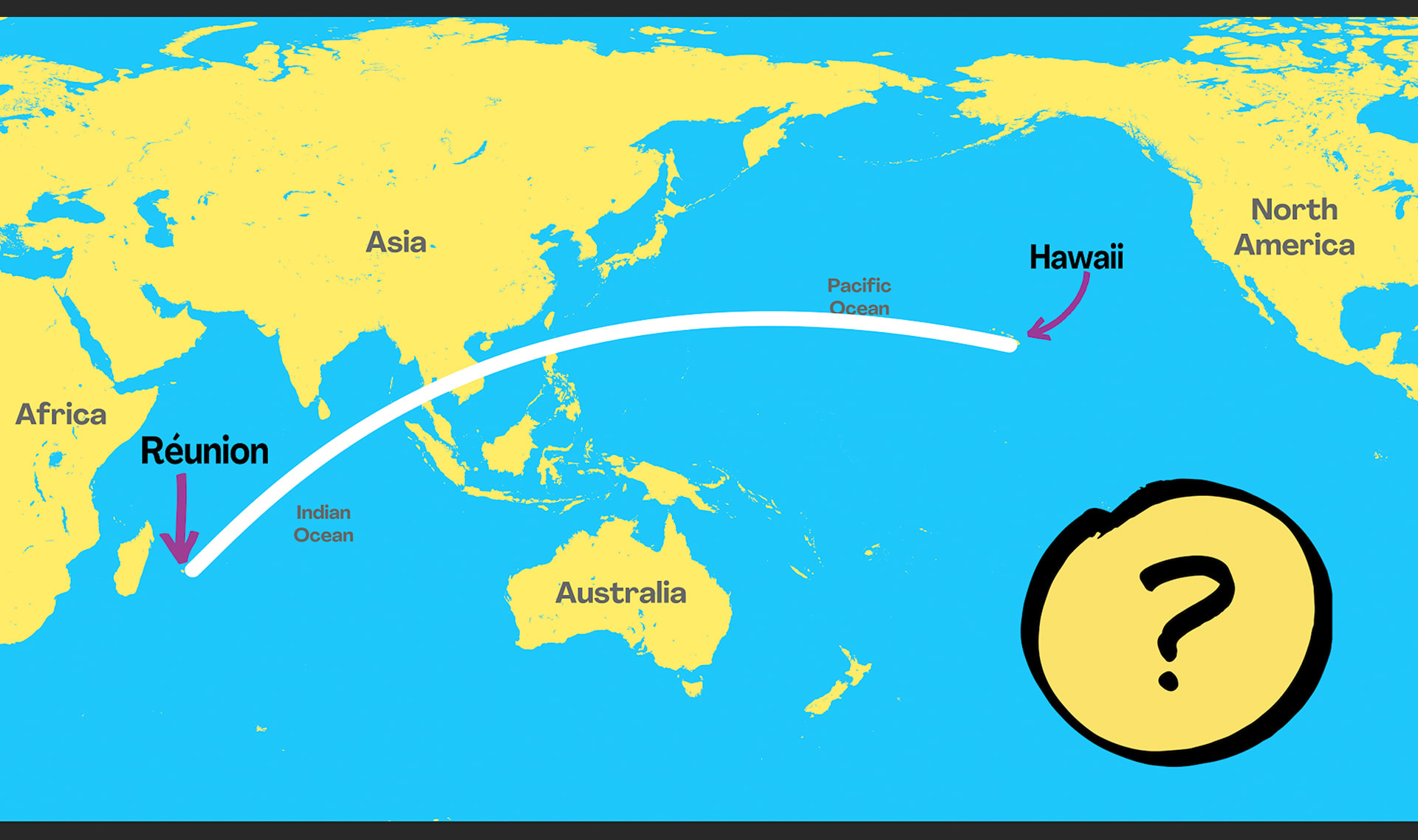
DISCUSS:
What kind of animal could carry a koa seed across the ocean to the other
side of the world?
What kind of animal could carry a koa seed across the ocean to the other
side of the world?

Please wait…
This video is having trouble loading. You may have lost your Internet connection.
Step 1: Click to Reload this page
Step 2: Click to
Try our other video player
Step 3: contact support if trouble persists.
Or,
dismiss this message.
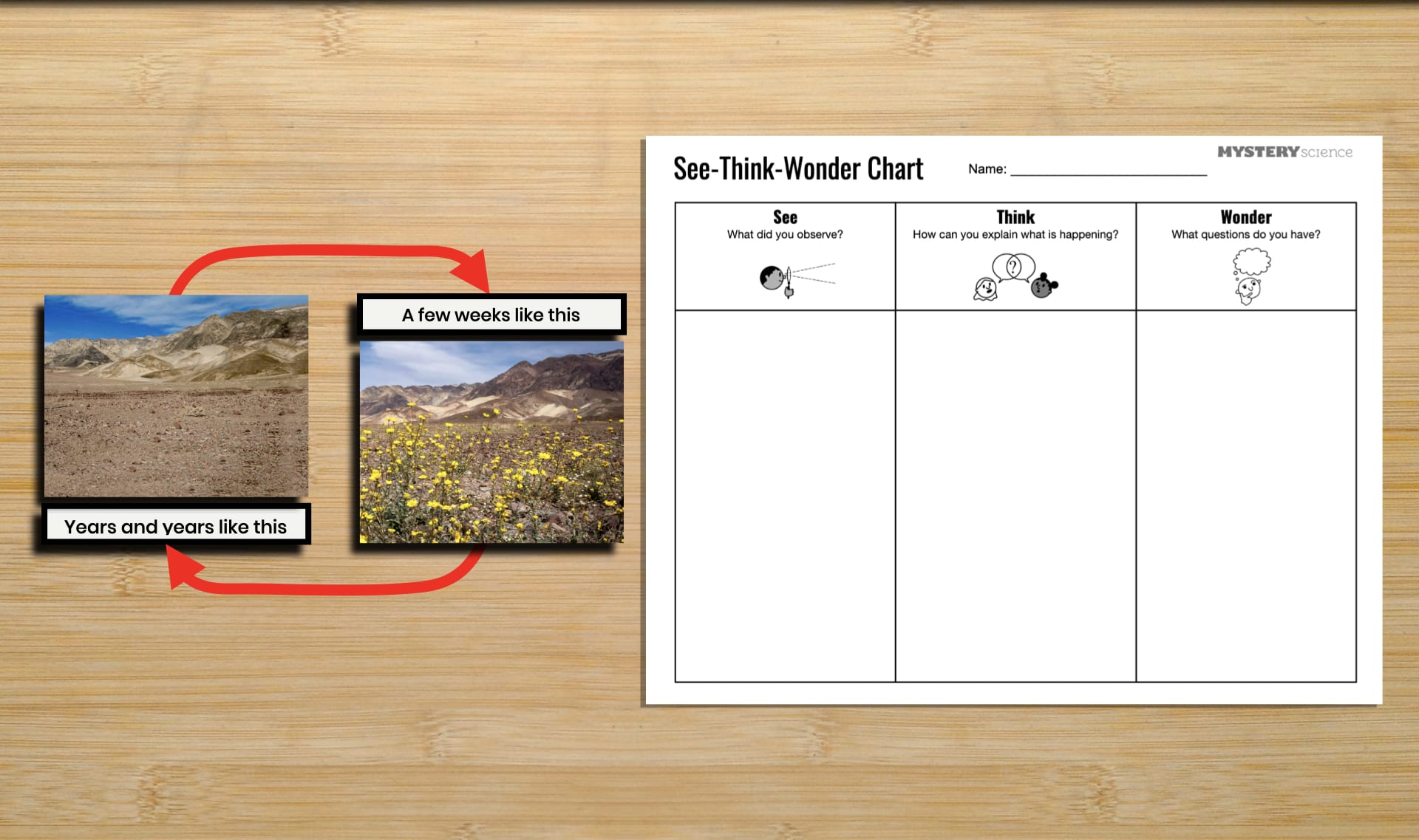
Anchor Connection
Discuss. Look at the "Wonder" column of your class See-Think-Wonder chart.
Have any questions been answered by the past lesson?
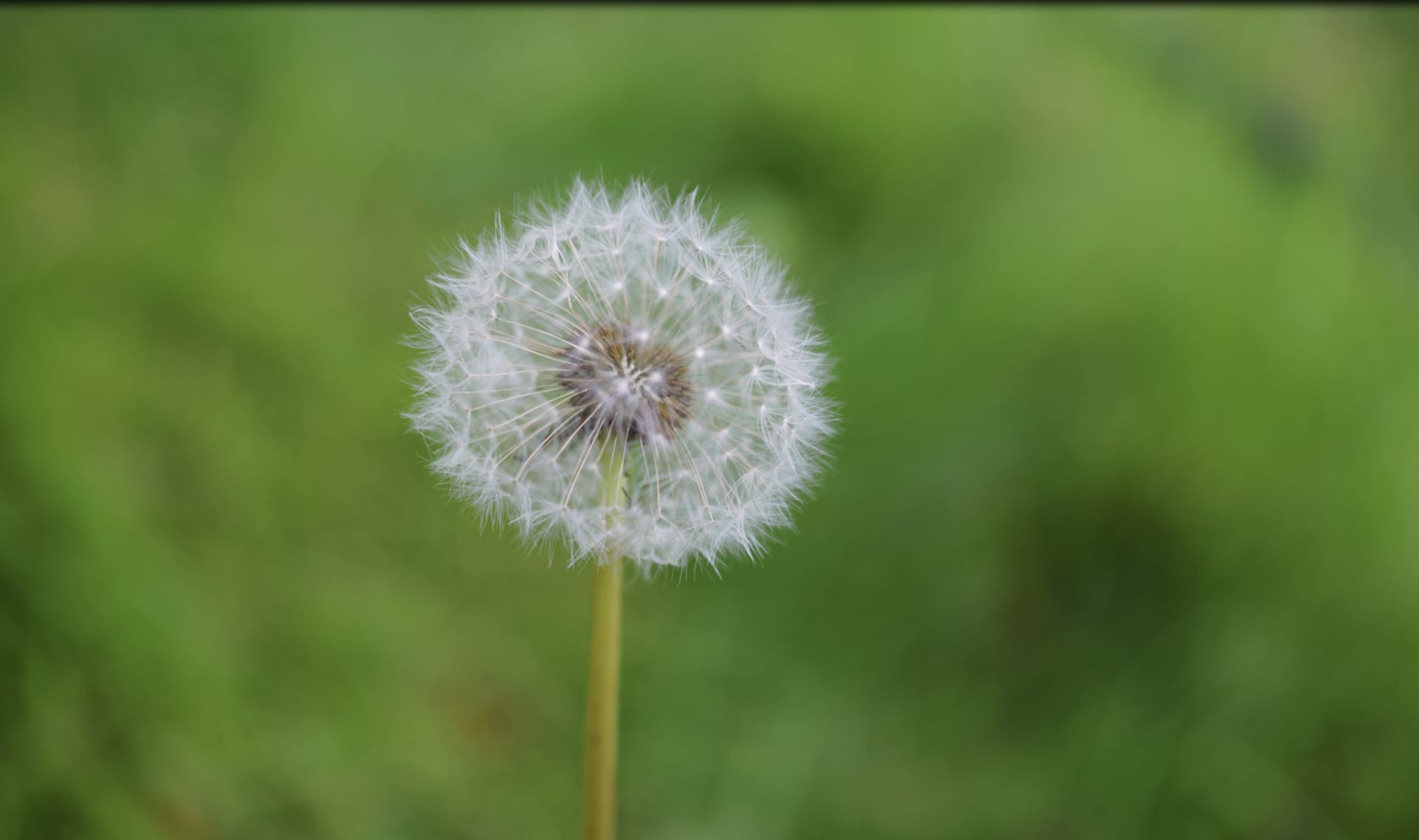
Step
01/12
01/12
In the past lesson, you learned that plants make seeds, and seeds
become new plants. Discuss. This is a dandelion. Where are the seeds
on it?
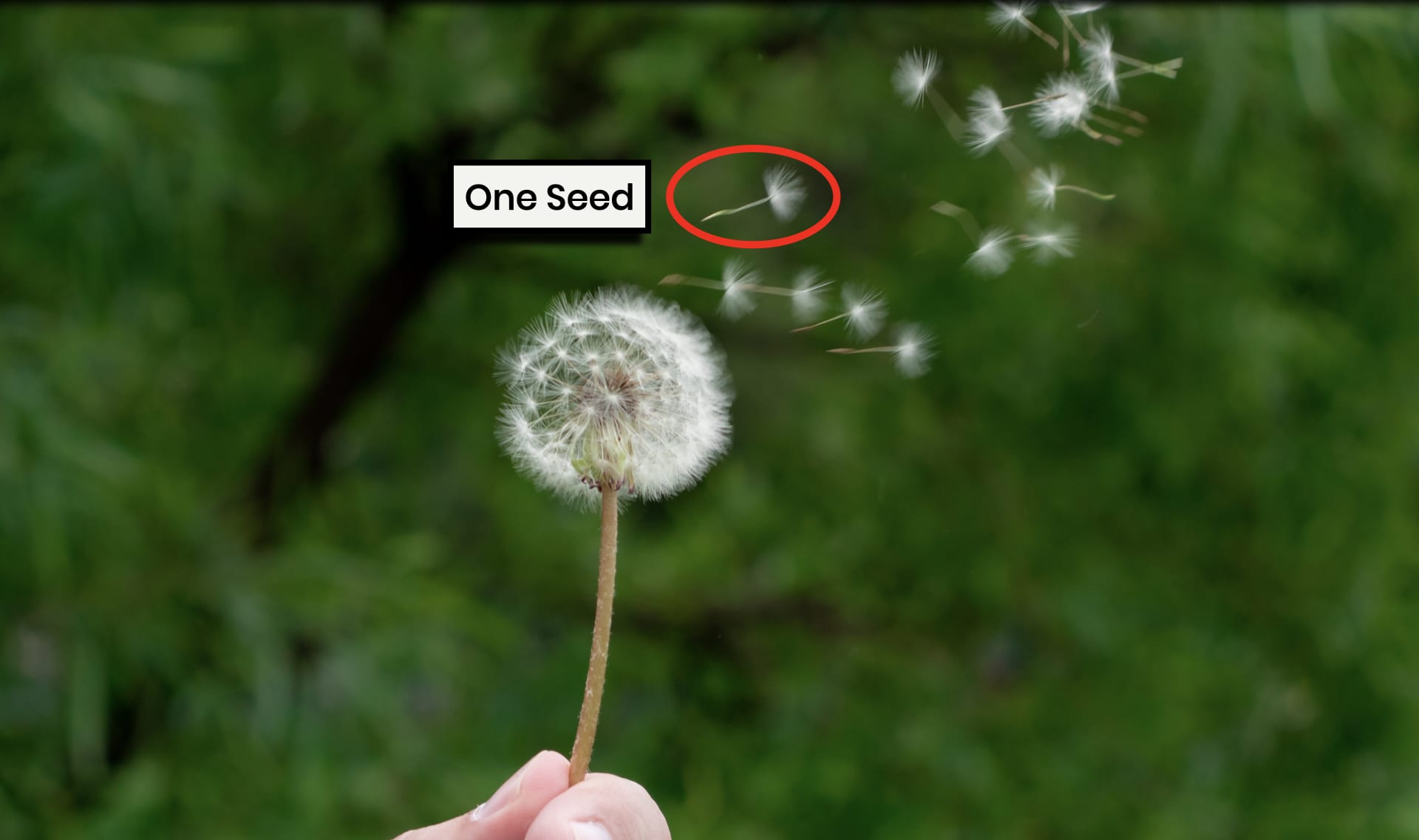
Step
02/12
02/12
Each one of the little puffs is a seed. The seeds become new plants.
Those new plants make seeds, and those seeds become more new
plants. It is a cycle!
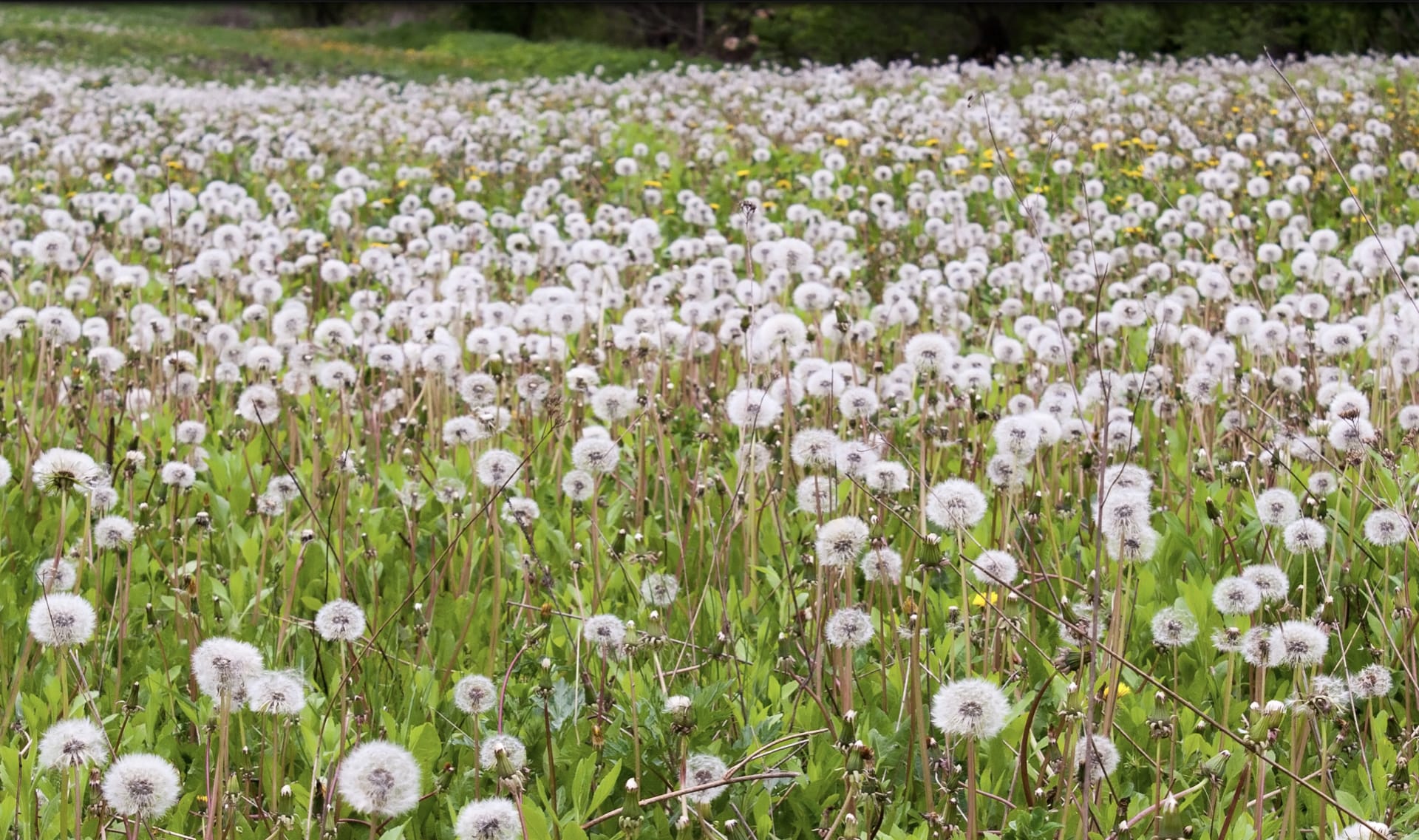
Step
03/12
03/12
With enough seeds, you can have a whole field of dandelions, just like
this! These dandelions came from old dandelions that grew before
them.
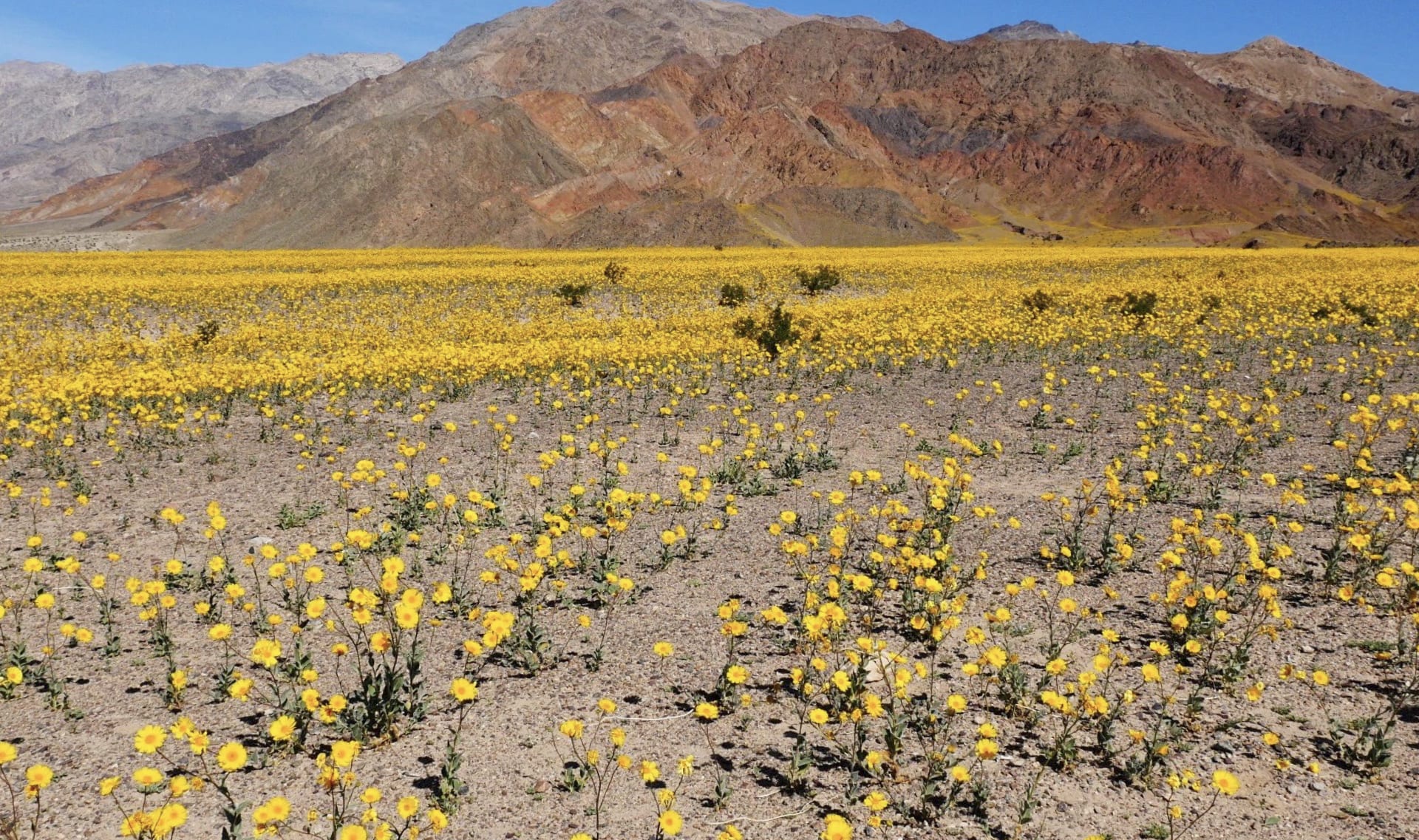
Step
04/12
04/12
The plants in Death Valley are not dandelions, but they are similar.
They grow from seeds, too. Discuss. Where do you think the seeds
for the 2016 superbloom came from?
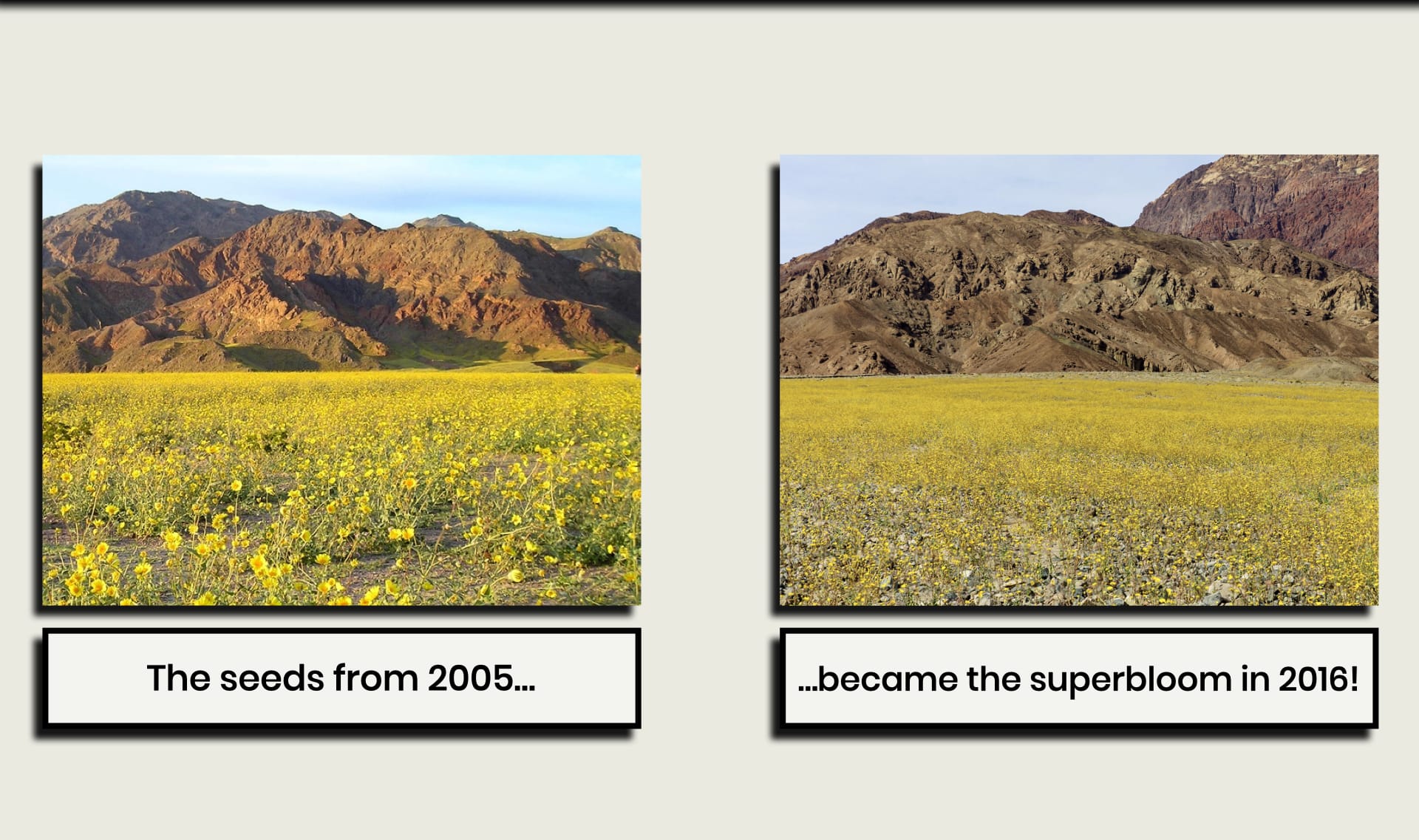
Step
05/12
05/12
The seeds for the 2016 superbloom came from the last superbloom
in 2005. Discuss. Where do you think the seeds for every
superbloom come from?
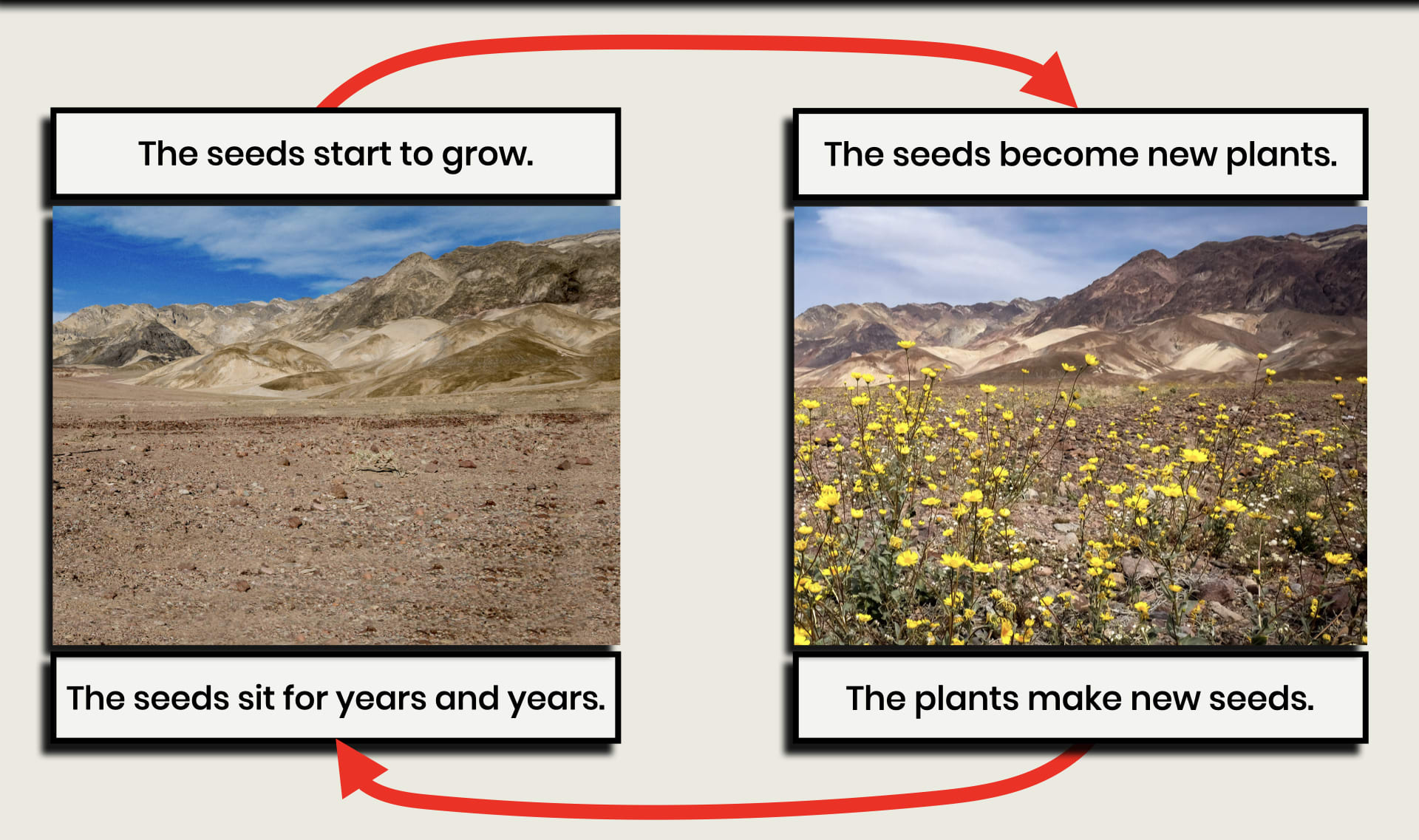
Step
06/12
06/12
The seeds for every superbloom come from the plants that grew in
the last one. It is a cycle. You can’t see the seeds here, but they are
there, waiting to grow.
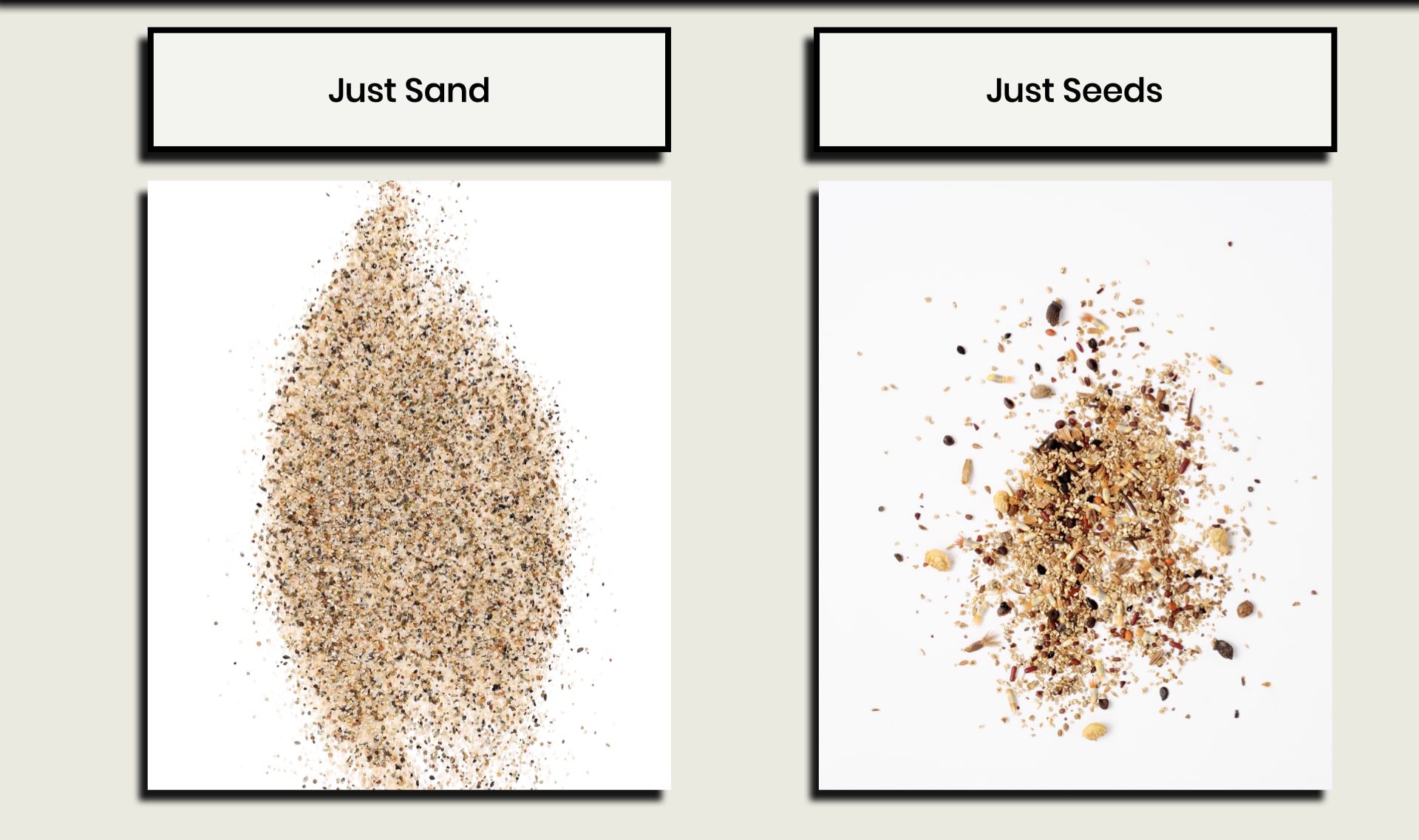
Step
07/12
07/12
This is what sand and seeds look like. They look very similar. Most
people don’t even see the seeds in Death Valley. If you ever visit
Death Valley, keep an eye out for seeds hiding in the sand.
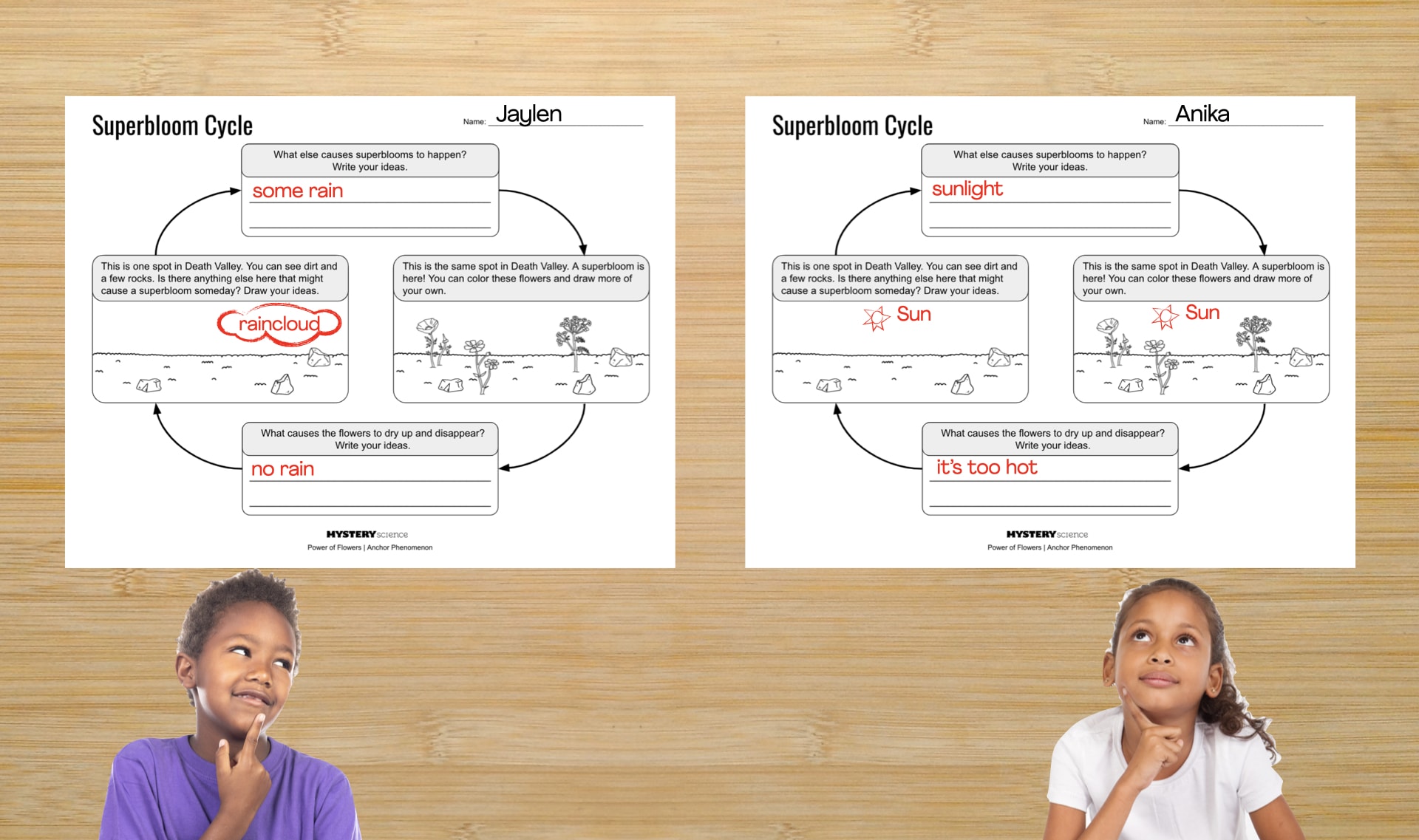
Step
08/12
08/12
Discuss. We know that seeds are important for superblooms. What
should these students add to their sheets? How should they do it?
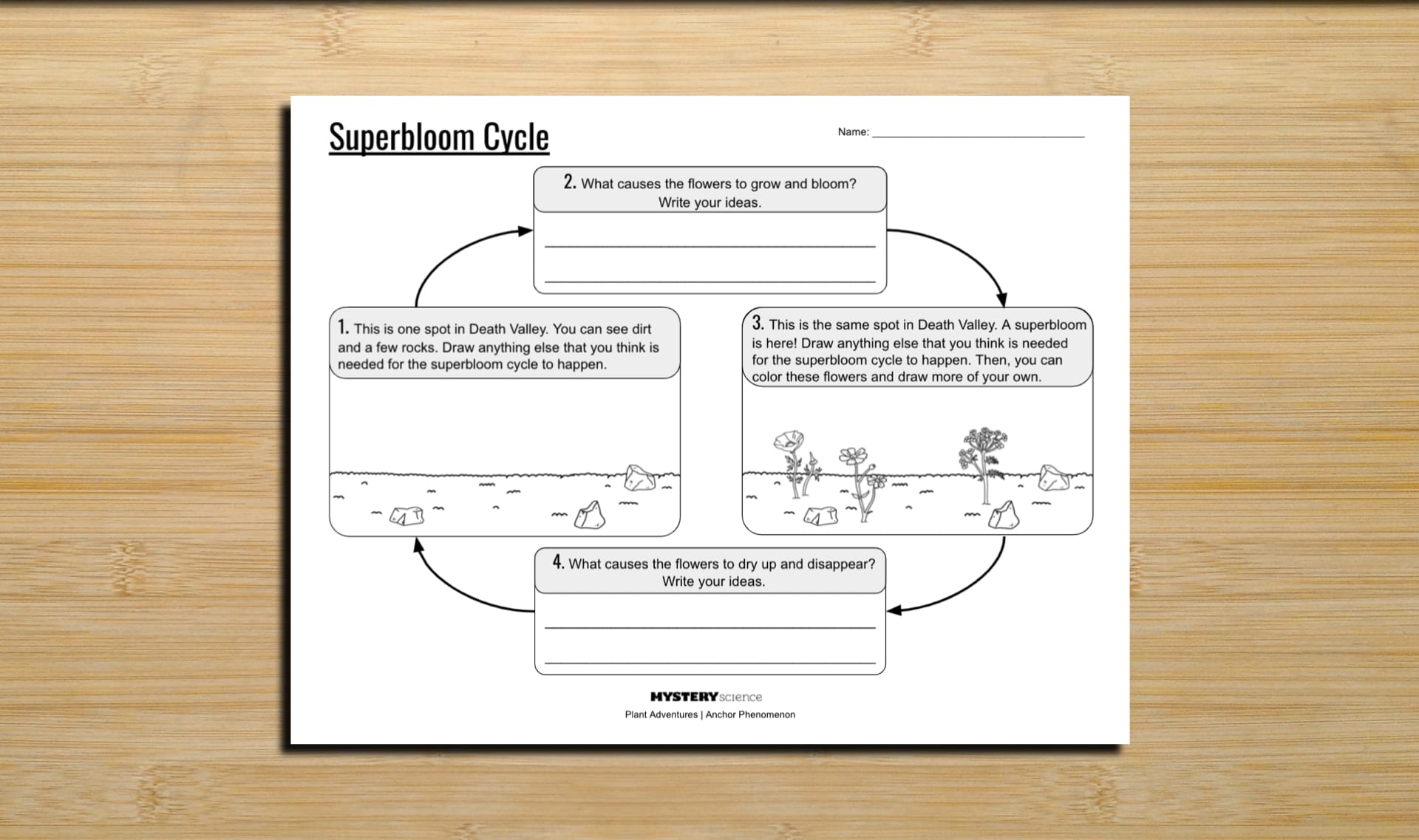
Step
09/12
09/12
Get your Superbloom Cycle worksheet.
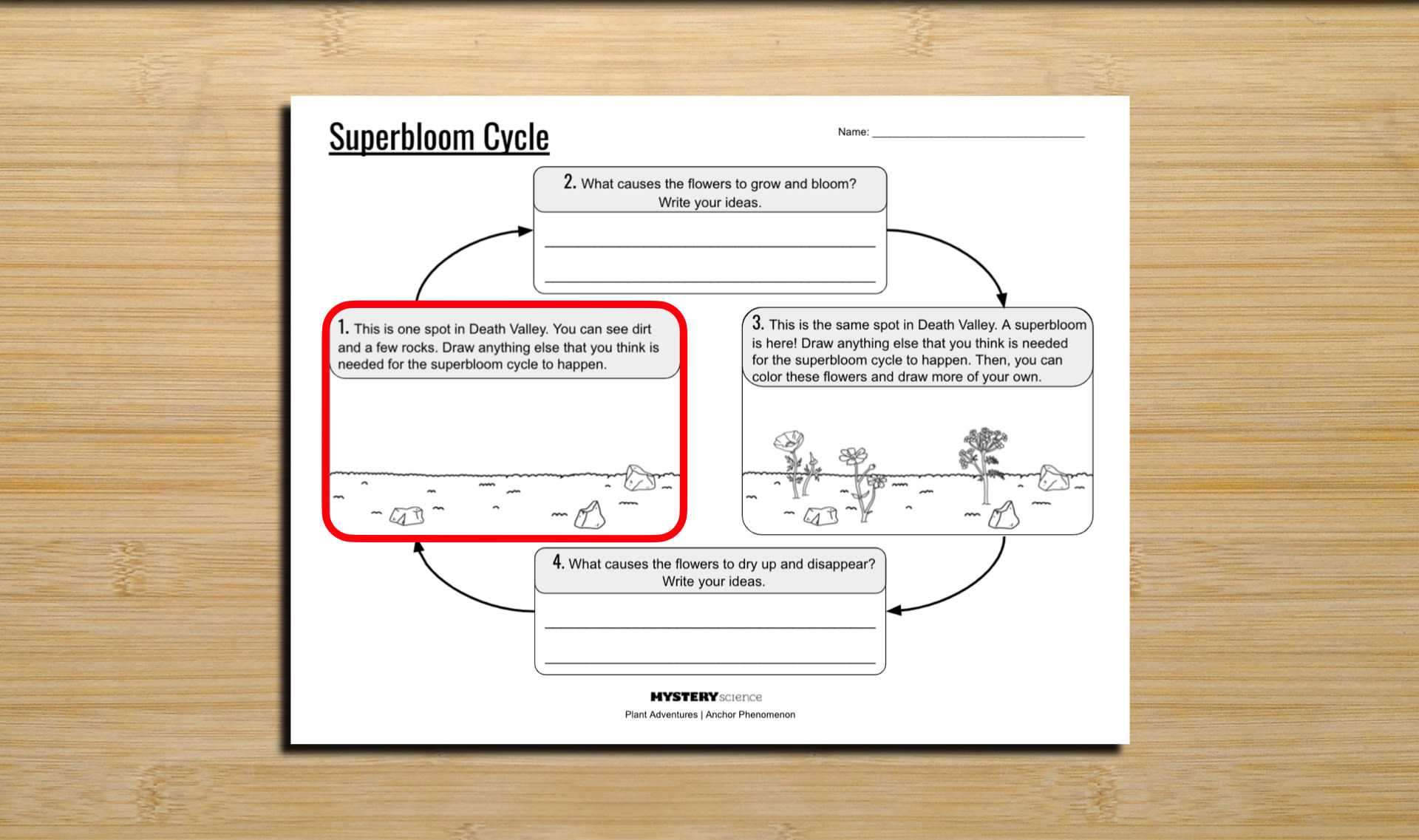
Step
10/12
10/12
If you didn’t draw seeds before, draw and label them here. The seeds
go on the ground.
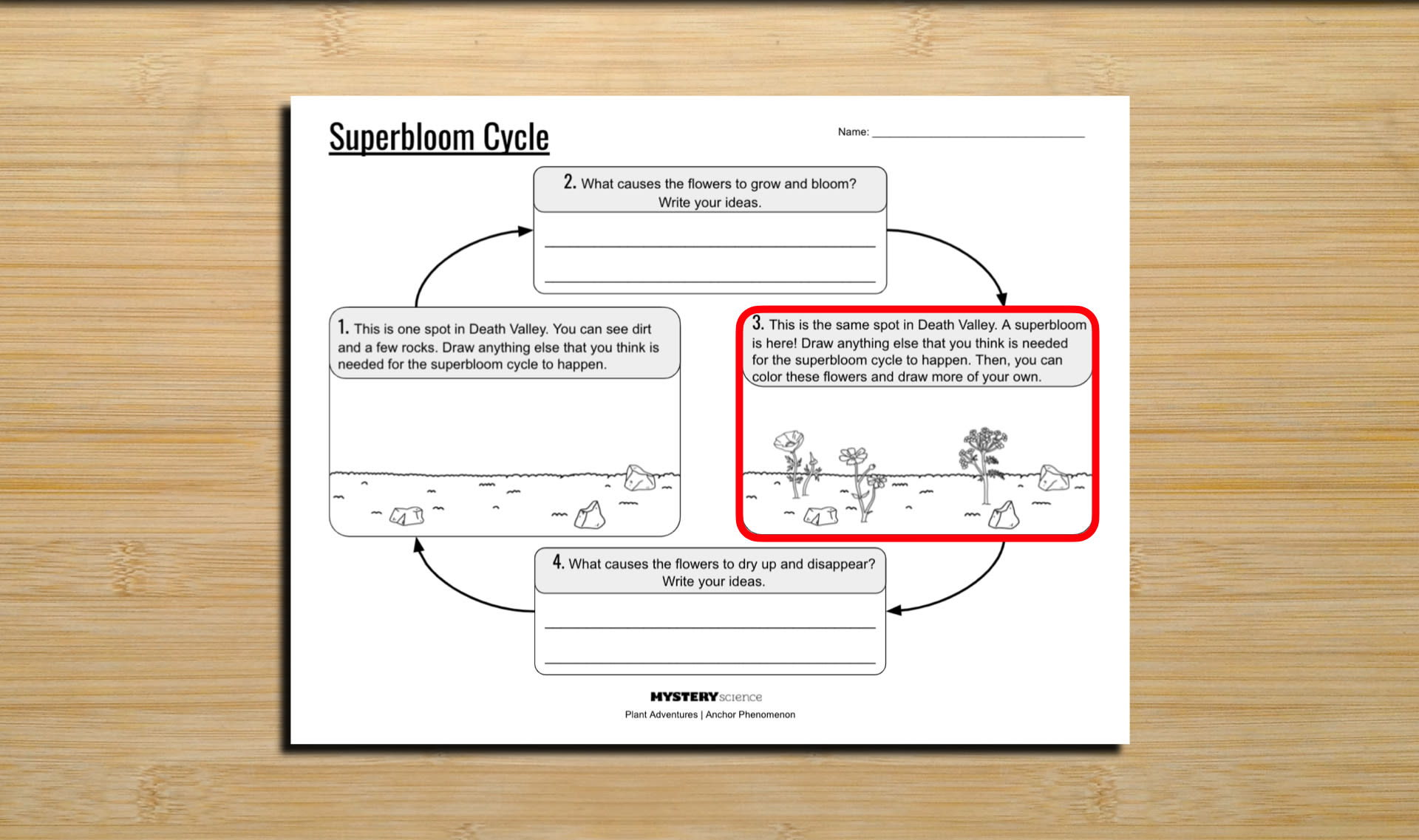
Step
11/12
11/12
If you didn’t draw new seeds coming from the superbloom, draw and
label them here. The seeds fall off of the flowers and land on the
ground.
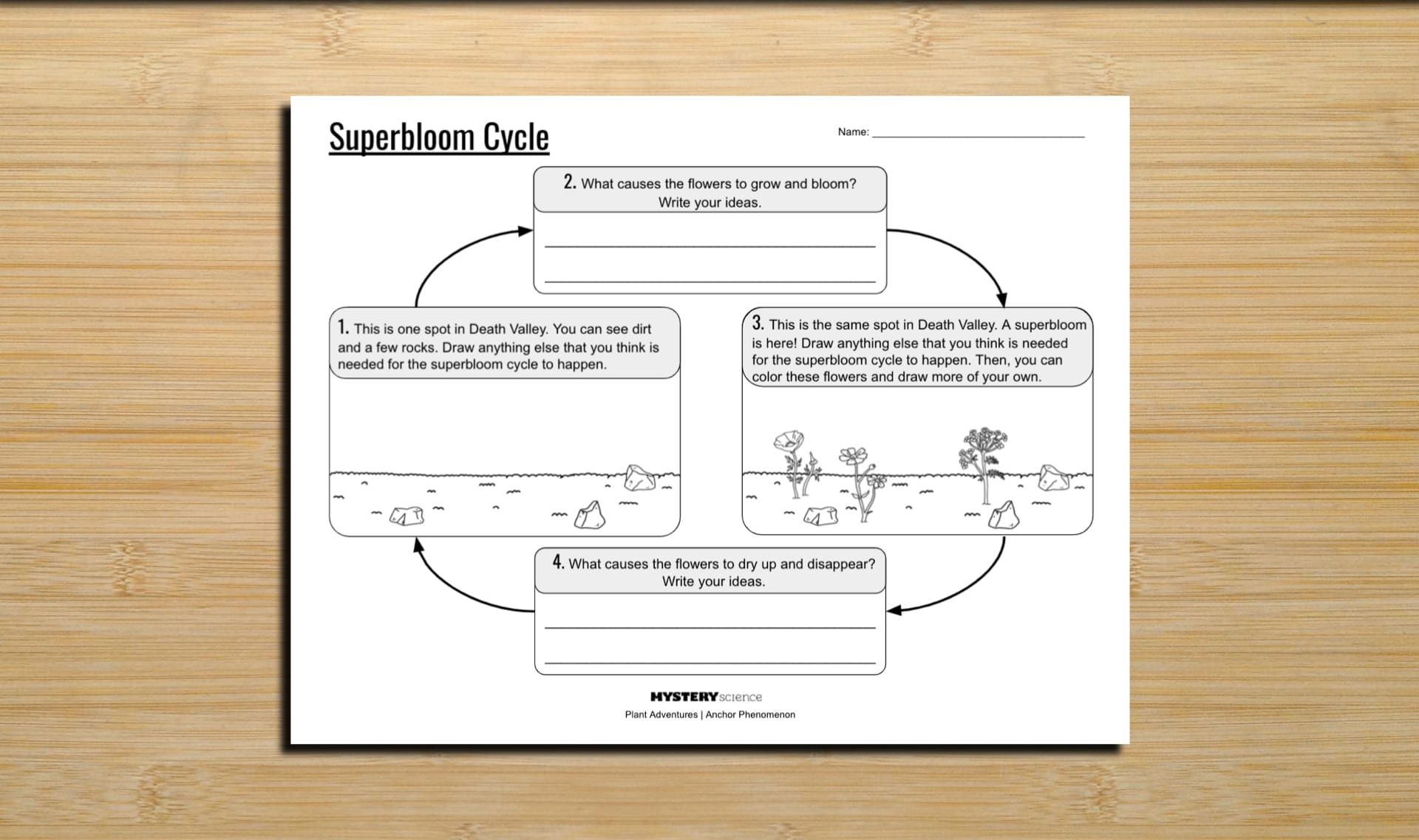
Step
12/12
12/12
Put your sheet somewhere safe. We still have more to learn about
the superbloom!

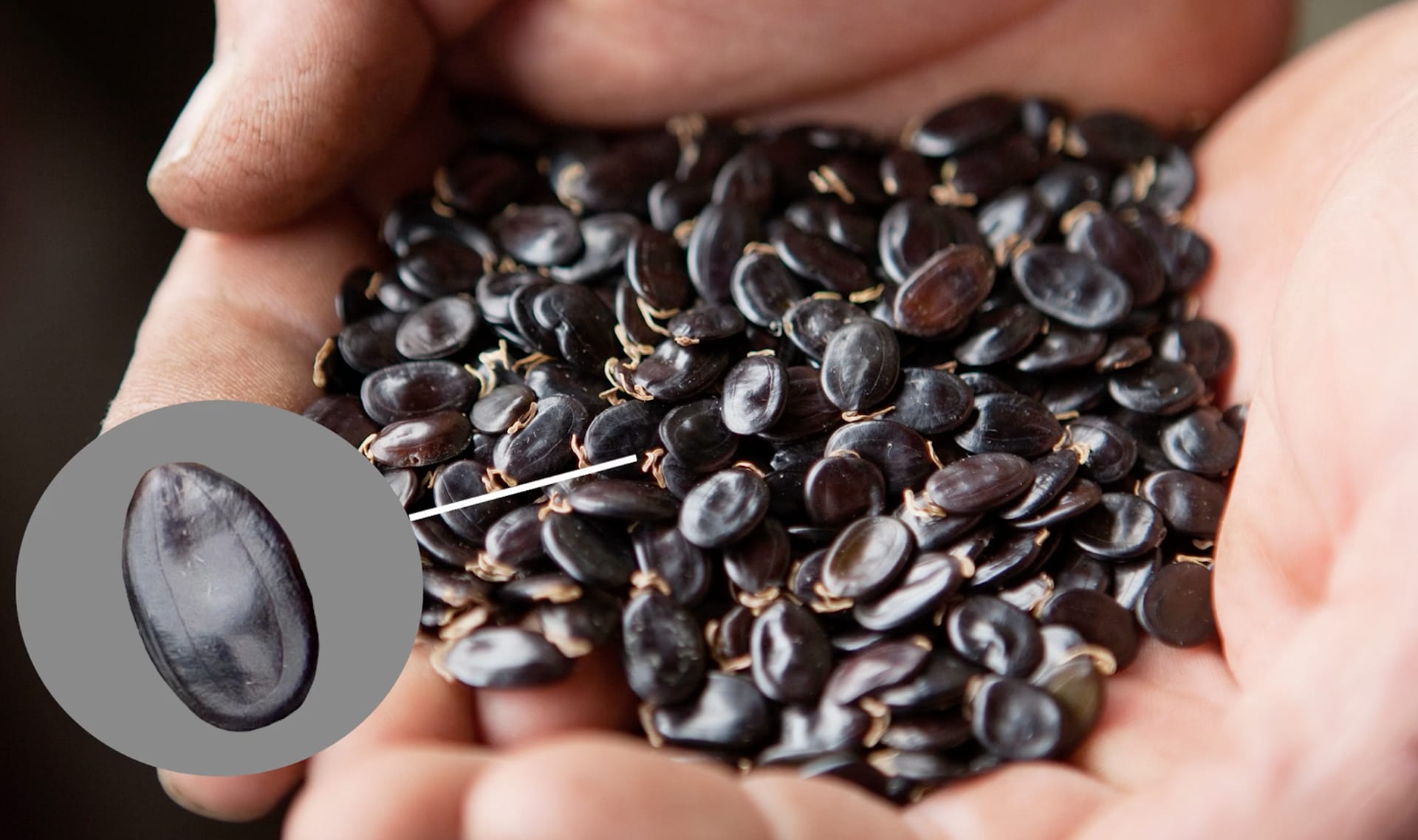
seed
1 of 10
a part of a plant that can grow into a baby plant
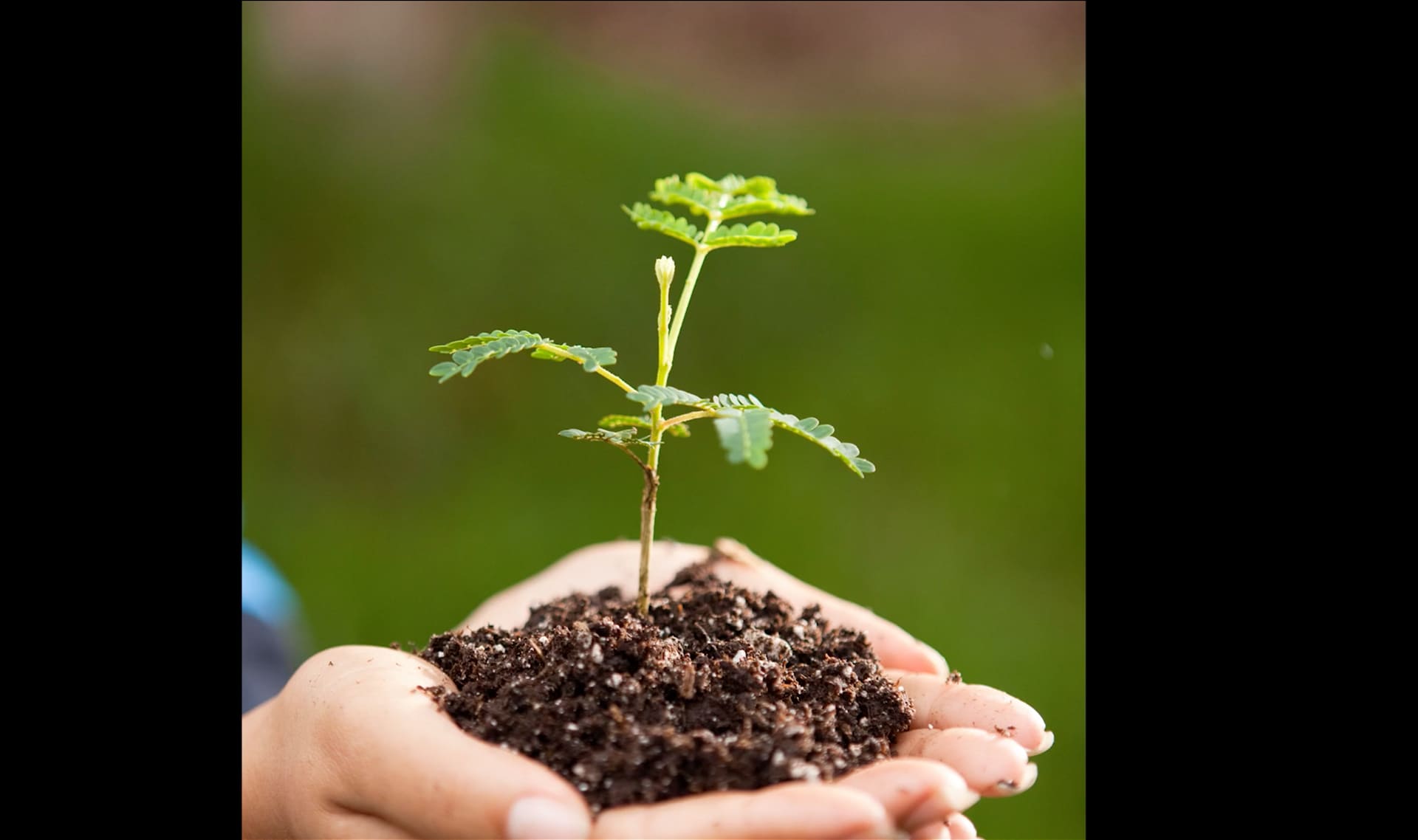
seedling
2 of 10
a young plant that grows from a seed
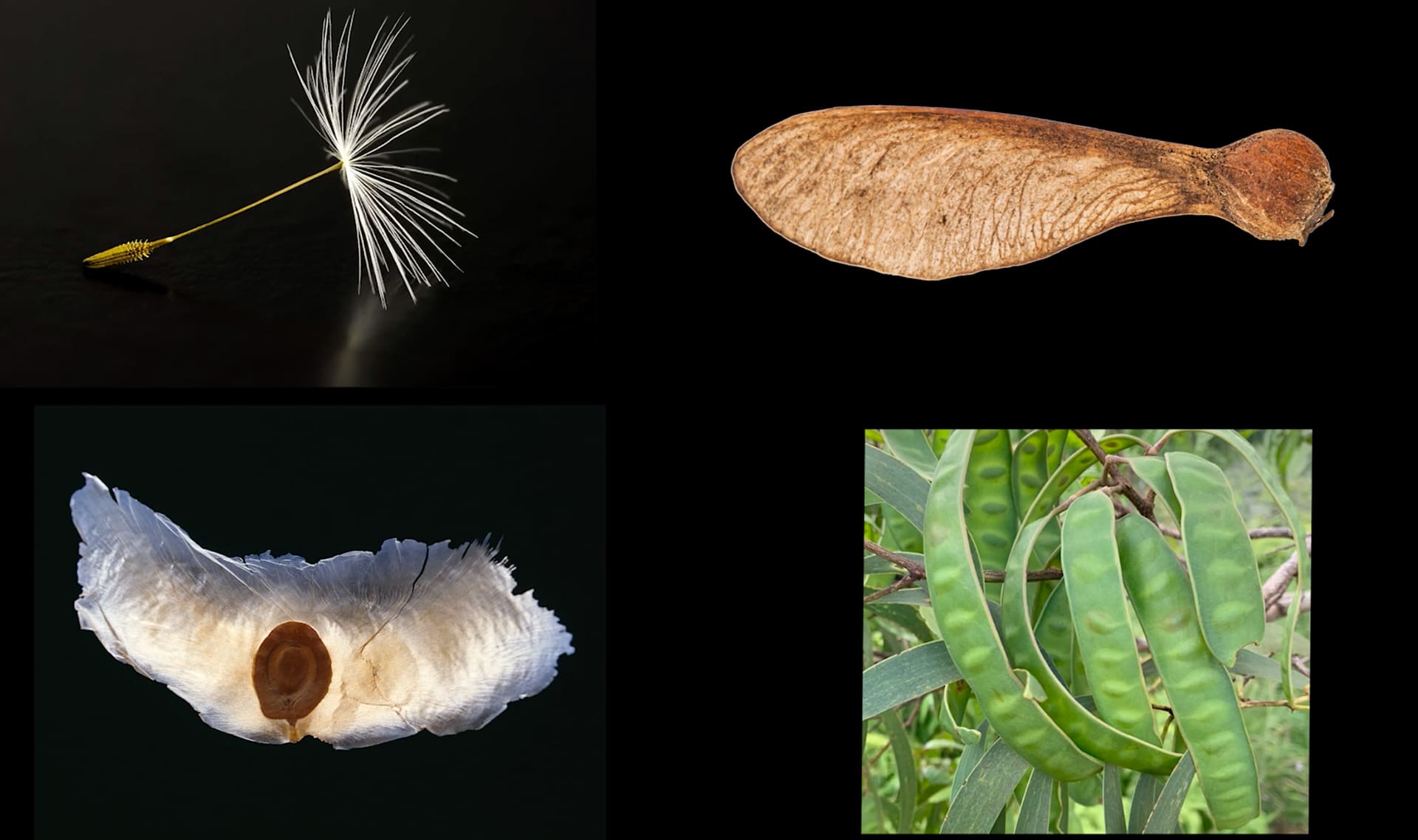
structure
3 of 10
the specific form and shape of something

Please wait…
This video is having trouble loading. You may have lost your Internet connection.
Step 1: Click to Reload this page
Step 2: Click to
Try our other video player
Step 3: contact support if trouble persists.
Or,
dismiss this message.
disperse
4 of 10
to move and spread out

Please wait…
This video is having trouble loading. You may have lost your Internet connection.
Step 1: Click to Reload this page
Step 2: Click to
Try our other video player
Step 3: contact support if trouble persists.
Or,
dismiss this message.
wind dispersal
5 of 10
when the wind moves a seed from one place to another

Please wait…
This video is having trouble loading. You may have lost your Internet connection.
Step 1: Click to Reload this page
Step 2: Click to
Try our other video player
Step 3: contact support if trouble persists.
Or,
dismiss this message.
water dispersal
6 of 10
when water moves a seed from one place to another

Please wait…
This video is having trouble loading. You may have lost your Internet connection.
Step 1: Click to Reload this page
Step 2: Click to
Try our other video player
Step 3: contact support if trouble persists.
Or,
dismiss this message.
animal dispersal
7 of 10
when an animal moves a seed from one place to another

Please wait…
This video is having trouble loading. You may have lost your Internet connection.
Step 1: Click to Reload this page
Step 2: Click to
Try our other video player
Step 3: contact support if trouble persists.
Or,
dismiss this message.
observe
8 of 10
to pay close attention to something

Please wait…
This video is having trouble loading. You may have lost your Internet connection.
Step 1: Click to Reload this page
Step 2: Click to
Try our other video player
Step 3: contact support if trouble persists.
Or,
dismiss this message.
compare
9 of 10
to notice what is similar and what is different between things
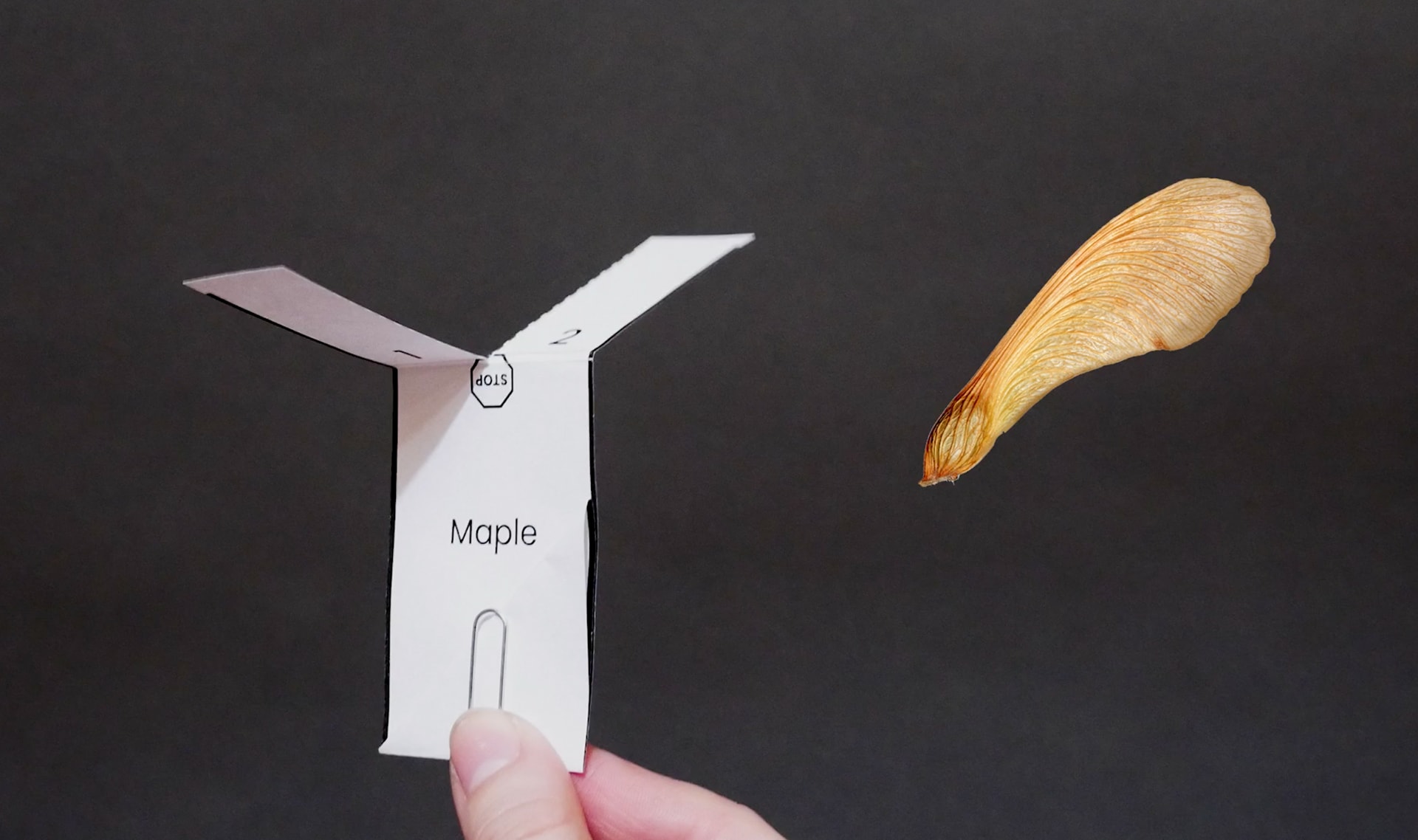
model
10 of 10
a pretend version of something that scientists use when the real thing is too big, small, or complicated to work with
🎉
That’s it for this lesson! How did it go?
Sign up now for more great lessons!
